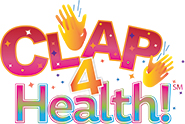Benefits for Children
Why is this Program needed for Children?
The percentage of children with obesity in the United States has more than tripled since the 1970s.1 Today, about one in five school-aged children (ages 6–19) are obese.10

Childhood Obesity and Child Well Being
Childhood obesity has immediate and long-term impacts on physical, social, and emotional health. For example:
- Children with obesity are at higher risk for having other chronic health conditions and diseases that impact
physical health, such as asthma, sleep apnea, bone and joint problems, type 2 diabetes, and risk factors for
heart disease. - Children with obesity are bullied and teased more than their normal weight peers, and are more likely to suffer from social isolation, depression, and lower self-esteem.
- In the long term, childhood obesity is also associated with being an obese adult, which is linked to serious conditions and diseases such as heart disease, type 2 diabetes, metabolic syndrome, and several types of cancer.24
- Additional health problems that are associated with childhood obesity include certain types of cancers, sleep apnea, fatty liver disease, and mental health problems such as anxiety and depression. There are also academic consequences of childhood obesity; evidence shows that children who eat poorly and are inactive tend to have weaker academic performance and lower scores on standardized achievement tests (Action for Healthy Kids).
The Center for Disease Control (CDC), Institute of Medicine reports that school-based health education programs that encourage healthy behaviors are the most effective method of combating cardiovascular illnesses and can reduce the prevalence of obesity by 50% among elementary school children.
Goals of the Clap4Health!℠ Fundraiser
- Build upon students’ understanding of how to take care of their bodies through awareness and wellness education programs.
- Promote the value of living healthy lives while grooving and having a blast!
- Reinforce the essentials of happiness throughout life.
- Raise funds to support your school’s/campus’ efforts to promote healthy living and the prevention of obesity, cardiovascular disease, and diabetes.
- Raise funds to “Build A Healthier Future” for our children and our world.
- 20% of all funds raised will go directly to the school/campus to provide and enhance physical fitness, nutritional education, and foster healthy habits on campus and at home. The remaining 80% will provide the Hip Hop Healthy Heart Program for Children™ at your school/campus for as many teachers as possible with the funds raised.
What is my role as the Campus Organizer for Clap4Health!℠ ?

- Share the vision of the program by being an active voice on campus by encouraging participation and getting the school community involved.
- Involve teachers, parents, student organizations, and the community in this program.
- Explain how students will be rewarded for participating.
- Launch this fundraising program on your campus so that students have fun while clapping and learning about healthy habits that last a lifetime!
Shape Up US is a 501c3 non-profit corporation is dedicated to preventing obesity and empowering children and families to lead healthier, happier lives. Shape Up US provides teachers, children, parents and communities at large with educational tools to create healthy, lifelong habits to improve their overall wellness. With a focus on cardiovascular health, physical exercise, nutrition, and mental and emotional well-being, we accomplish our mission of building healthy futures for our children through a three-pronged approach of: AWARENESS! EDUCATION! ACTION!
Childhood Obesity:
- Today one in three American kids and teens are overweight or obese
- 76% of men and 68% of women between ages 55 and 64 are obese
- Childhood Obesity could reduce life expectancy by 5 years
http://ahealthieramerica.org/resources/facts/
Cardiovascular Disease:
- Approximately 60% of obese children aged 5-10 years had at least one cardiovascular disease risk factor
- 25% had two or more risk factors+
https://www.cdc.gov/chronicdisease/pdf/2009-power-of-prevention.pdf
Childhood Diabetes:
- Almost half of all children’s Type 2 diabetes diagnoses are related to obesity
- An estimated 215,000 people nationwide under age 20 have diabetes; about 1 in every 400 children and adolescents haveType 1 diabetes, according to the CDC.
Obesity Medical Costs:
- The healthcare costs related to childhood obesity reached $14 billion every year
https://www.unitypoint.org/blankchildrens/article.aspx-?id=a08c96a2-c311-40d3-8eee-93d15f92b7ef/
Cardiovascular Disease Medical Costs:
- Direct and Indirect Costs: $304.6 billion
http://www.cdc.gov/NCCDPHP/publications/AAG/dhdsp.htm
Diabetes Medical Costs for Young People:
- The annual cost of medical care for young people with diabetes is six times higher than medical care for children and teens without the disease, according to a new U.S. Centers for Disease Control and Prevention study.
- The average annual medical expense for youths with diabetes is $9,061, compared with $1,468 for youths without the disease
- The childhood cost of diabetes is high, but the reality is that cost is dwarfed by complications down the road,” Weiss said, noting a typical heart bypass costs about $60,000, and a year of dialysis,$90,000.
https://www.cdc.gov/media/releases/2011/p0427_youthdiabetes.html
